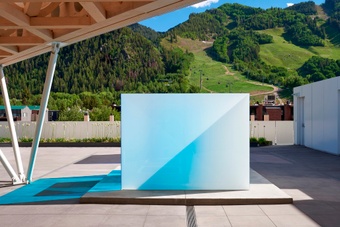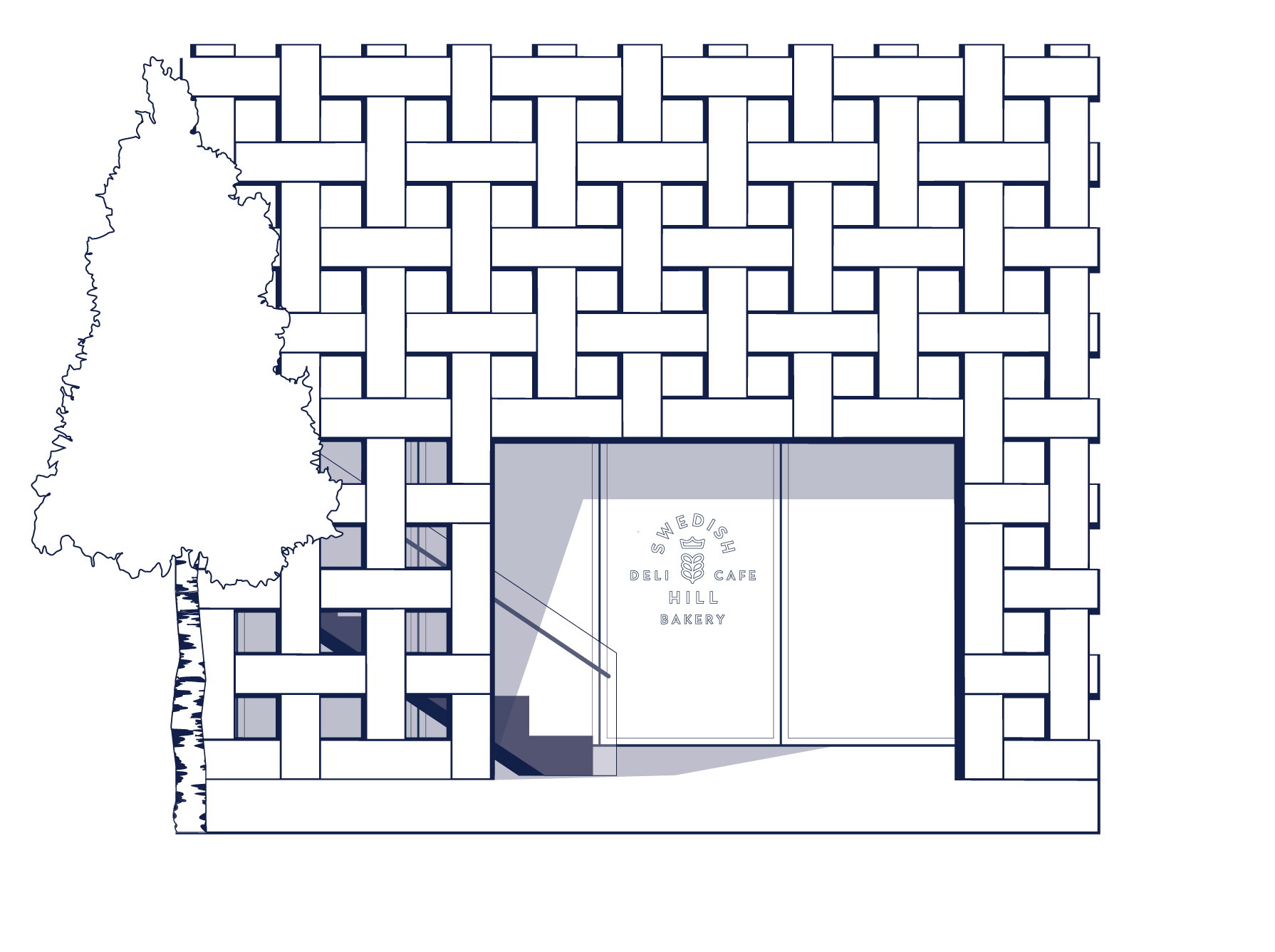Aspen Art Museum
- Categories
- All events
- Talks and Lectures
- Member Events

- For more information on how you can join the AAM, please visit the Street Level Visitor Information Desk, inquire in the Shop, or call 970.925.8050.

- Swedish Hill Aspen is open on our Rooftop from 8AM–3PM

- Aspen Art Museum is an artist-founded institution dedicated to supporting artists in the development of bold ideas to shape our museum and the field of art today.
Austerity is the first institutional solo exhibition by Megan Marrin (b. St. Louis, MO), an artist based in New York City’s East Village. Across five paintings, Marrin summons Jean-Michel Frank (1895-1941), a French interior designer (or, more appropriately, ensemblier) whose domestic environments evince a fixation with simplicity, perfection, and stripped-back elegance. Frank is credited with signaling a break from the dense, saturated living spaces of the Victorian era, and instead embracing a “passion for absence” that became celebrated amongst the aesthetes of the interwar period in Europe and influenced subsequent generations of tastemakers and designers including Jacques Grange and the late Jed Johnson after his rediscovery in the 1970s.*
Frank’s worldview is distilled by Marrin, who presents scenes from a Frank-designed bathroom, bedroom, and a careful study of a wardrobe. Sites where the body is controlled and conditioned are of interest to Marrin, who is recognized for stark paintings of antique showers, Pilates equipment, and punishment devices. In Austerity, Marrin contemplates the mysterious, troubled psyche of Frank, who approached his rooms as sanctuaries within a harsh and unforgiving world. Born of ill health and beset by family tragedy and the horrors of the Holocaust, Frank, who was Jewish and a cousin of Anne Frank, fled Paris for Buenos Aires in 1940, ending his life in New York City in 1941. Frank was prolific in his creative output, generating radical, opulent retreats, and frequently collaborating with artists from his social set including Salvador Dalí, Man Ray, Christian Bérard and the Giacometti brothers. These environments were typified by unconventional materials including mica, parchment, shagreen, glass, and gleaming metals. Harmony and perfect proportions, rather than the messiness of human life, were of paramount importance to Frank, who would say upon completing a job, “Voilà, my work is done. Now you can start ruining it.” Marrin emphasizes the fragile, salve-like quality of these rooms in her paintings where surfaces shine and seduce. With a devotional precision that parallels Frank’s, the artist further preserves these places in which life was still. Cork lines the Museum gallery walls, dampening sound and alluding to Frank’s own predilection for wall coverings, and his own Proustian infatuation. The exhibition’s fifth painting amplifies a detail of an etching by Alberto Giacometti, created for the cover of a René Crevel novel, which Frank framed in mica and burnt wood. In it, a skeleton hovers in a porous cage vis-à-vis a seahorse. The surreal scenario foregrounds the yearnings for frictionless security that course through the exhibition.About Megan Marrin
Megan Marrin (b. St. Louis, MO) lives and works in New York. She received her BFA from the
School of Visual Arts New York City. She has exhibited in solo and group exhibitions at Swiss
Institute, New York (2022–23), Dépendance, Brussels (2022), Ordet, Milan (2022), Den Frie,
Copenhagen (2021), Efremidis, Berlin (2021), Andrew Kreps Gallery, New York (2021), Queer
Thoughts, New York (2020), Sadie Coles, London (2019), Svetlana, New York (2018), David
Lewis, New York (2017), Mitchell Algus Gallery, New York (2016), and WIELS Contemporary
Art Center, Brussels (2014).
Megan Marrin wishes to thank Emanuel Rossetti, Dmitry Komis, Nancy Graves and Daniel Merritt.
This exhibition is organized by Daniel Merritt, Director of Curatorial Affairs.
AAM exhibitions are made possible by the Marx Exhibition Fund. General exhibition support is provided by the Toby Devan Lewis Visiting Artist Fund. Additional support is provided by the AAM National Council.
free courtesy
Amy & John Phelan
- Aspen Art Museum
- 637 East Hyman Avenue
- Aspen, Colorado 81611
- t: 970.925.8050
- f: 970.925.8054
- info@aspenartmuseum.org
| Hours |
|
Tuesday–Sunday, 10 AM–6 PM
Closed Mondays
|
© 2024 Aspen Art Museum
General operating support is provided by Colorado Creative Industries. CCI and its activities are made possible through an annual appropriation from the Colorado General Assembly and federal funds from the National Endowment for the Arts.



General operating support is provided by Colorado Creative Industries. CCI and its activities are made possible through an annual appropriation from the Colorado General Assembly and federal funds from the National Endowment for the Arts.










